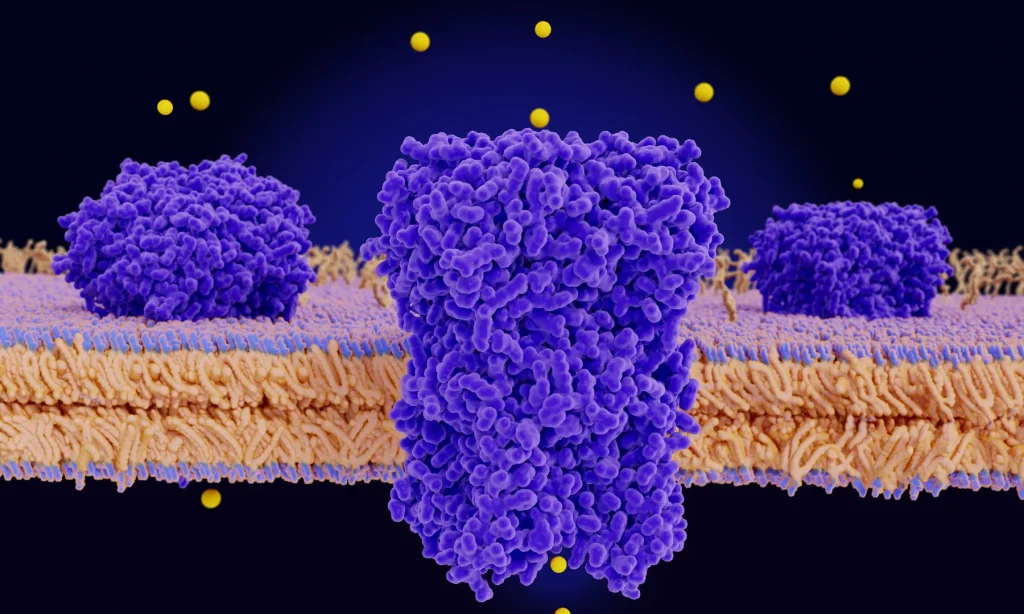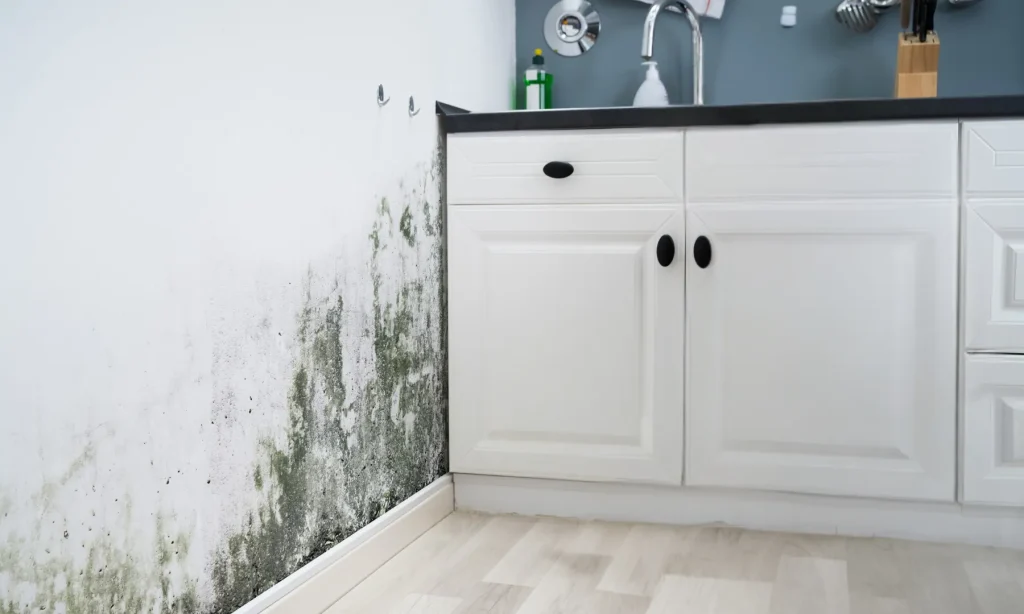You’ve tried everything. The medications, the therapies, the endless appointments. Yet your child’s tics persist, leaving you wondering if there’s something you’re missing. What if the answer isn’t just in treating the signs but in understanding what might be triggering them in the first place?
Environmental toxins are everywhere – in the air we breathe, the food we eat, even the products we use daily. While research into the connection between toxins and tic disorders is still evolving, many parents have noticed their children’s tics worsen after exposure to certain chemicals or improve when they eliminate specific triggers. It’s not about replacing medical care with a refresh plan. It’s about exploring whether everyday toxins could be amplifying your child’s tics and learning practical ways to reduce exposure. Consulting with a tic disorder expert who understand how these are connected can be a start.
This article will walk you through the potential links between tics and toxins, helping you identify possible triggers and create a better, calmer environment for your child.
Key Takeaways
-
Environmental toxins may trigger or worsen tics by causing neurological inflammation, disrupting the gut-brain axis, and interfering with neurotransmitter function in developing brains.
-
Common hidden sources include household products, such as cleaning supplies, air fresheners, flame retardants in furniture, mold/mycotoxins, and pesticide residues on non-organic foods.
-
Testing before detoxing is essential – random detox protocols without proper testing can worsen symptoms and miss the actual triggers affecting your child.
-
Watch for toxic overload signs beyond tics, including digestive issues, brain fog, skin problems, mood swings, and symptoms that improve when away from home.
-
A systematic approach works best: first identify and remove toxin sources, then support the body’s natural detox pathways, and finally rebuild damaged systems with proper nutrition and nervous system support.
-
Track patterns between exposures and symptoms in a simple journal to identify your child’s specific triggers and create an effective management strategy.
Table of Contents
Why Toxins Could Be the Missing Piece in Your Child’s Tic Disorder Puzzle
It’s frustrating for parents that despite trying everything, your child’s tics persist. What if the answer isn’t in what you’re adding to their routine, but in what’s already surrounding them every single day?
The Hidden Culprits Triggering Your Child’s Nervous System
Think about your child’s typical day. The breakfast cereal might contain glyphosate residues. The freshly painted bedroom releases volatile organic compounds for months. That musty basement playroom? It could harbor mycotoxins from mold you can’t even see.
Your child’s developing brain processes these exposures differently than yours does. Their blood-brain barrier—that protective shield around the nervous system—isn’t fully mature until their late teens. So while you might feel fine in that same environment, their neurological system is working overtime trying to cope.
How Toxins Create the Perfect Storm for Tics
Imagine your child’s nervous system as a control tower managing signals for smooth movement. Environmental toxins disrupt this flow, like static on all radio channels. Heavy metals like lead and mercury block signals between brain cells, while pesticides like glyphosate disturb the gut-brain connection[1]. This leads to neurological inflammation, causing repetitive movements you may notice.
Reading the Signs Your Child’s Body Is Sending
Your child’s body has been dropping hints all along. Those dark circles under their eyes that everyone calls “allergic shiners”? They’re often a sign of chronic inflammation. The eczema that flares during tic episodes? Another inflammatory red flag.
Watch for patterns. Does your child’s tics worsen after swimming in chlorinated pools? Do they spike after the lawn gets treated? These aren’t coincidences—they’re your detective clues pointing toward specific environmental triggers.

Tics and Toxins: How They Are Connected
You’ve probably wondered if there’s something in your child’s environment that’s making their tics worse. Turns out, you might be onto something—the relationship between toxins and tics is more complex than most doctors realize.
Defining Toxins and Toxicants
When scientists talk about toxins, they’re actually referring to naturally occurring poisons—think poisonous mushrooms or those brightly colored tree frogs you see in nature documentaries. The chemicals in your cleaning cabinet? Those are technically called toxicants. For our purposes, we’ll use “toxins” as the umbrella term for both natural and synthetic nasties that can affect your child’s nervous system. Whether it’s the mycotoxins from that suspicious black spot in your bathroom or the pesticide residue on non-organic strawberries, they all fall into this category when we’re talking about potential tic triggers.
Two Types of Toxicity
Toxicity can be compared to sunburn and sun damage. Acute toxicity is like a sudden, painful sunburn caused by brief exposure to something harmful. Chronic toxicity is like long-term sun damage, gradually building up from repeated small exposures over time. For children, even tiny daily doses of harmful substances like heavy metals or pesticides can accumulate. Additionally, some substances can harm developing brains at very low levels, where frequent small exposures may be more damaging than a single larger one[3].
Why Today’s Kids Are More Vulnerable
Walk outside and take a deep breath. That air contains more pollutants than it did 50 years ago. Turn on your tap—even filtered water can’t remove everything. The rivers and streams where you might take your kids fishing? They’re carrying chemical cocktail that didn’t exist when you were young. Your child’s developing brain is processing all these exposures differently than yours does. Their blood-brain barrier is more permeable, their refresh systems are still maturing, and their rapid growth means they’re absorbing everything at higher rates relative to their body weight.
The gut-brain axis—that superhighway of communication between the digestive system and the brain—is particularly vulnerable. When environmental toxicants damage the gut lining, it can trigger microglial cell activation in the brain[4], leading to the kind of neurological inflammation[3] that manifests as tics. Your child’s body might be sending out an SOS signal through those repetitive movements.
Where Toxins Hide: Common Sources That Worsen Tics
You’ve probably walked through your home countless times without realizing it’s filled with invisible triggers that could be making your child’s tics worse. These everyday exposures aren’t always obvious—they’re hiding in plain sight, from the furniture you sit on to the products you use to keep things “clean.“
Environmental Toxicants
Children are exposed to harmful chemicals in everyday environments. The “new car smell“ is actually off-gassed chemicals, while pesticides, herbicides, and car exhaust also pollute the air they breathe. Flame retardants in furniture release toxic particles that settle into household dust, potentially worsening conditions like tics, as one parent discovered after replacing an old sofa. Wildfire smoke and industrial emissions add more toxins, posing risks to developing nervous systems. Even the scent of dry-cleaned clothes contains perchloroethylene, a neurotoxic chemical that lingers for days.
Heavy Metals in Children
Using aluminum-based antiperspirants, especially during the teen years, may worsen tics due to heavy metal exposure. Children’s developing brains are more vulnerable to toxins like aluminum and mercury, which can come from cookware, dental fillings, and certain medical products. Aluminum antiperspirants, applied to freshly shaved skin, allow the metal to absorb into the bloodstream, potentially intensifying tics. Even daily activities like cooking with aluminum pans can contribute, but switching to stainless steel cookware has helped some families reduce their child’s tics.
Biological Toxins
Mold is a major, often overlooked toxin in homes, with mycotoxins causing neurological inflammation[2] that can lead to tics. Moldy areas like basements or bathrooms release spores that disrupt the gut-brain connection. Schools, especially older or water-damaged ones, can also harbor mold, worsening tics in children, as seen in one case where symptoms improved during a school break. Another issue is candida overgrowth. When gut bacteria are imbalanced, often due to antibiotics or high-sugar diets, candida produces toxins that cause inflammationand worsen tics by impacting the gut-brain axis[3].
Daily Household Products
Your daily routine could expose your family to hundreds of chemicals. Laundry detergents release synthetic fragrances all day, and candles emit artificial scents and particulates. Personal care products like shampoo, toothpaste, and perfume contain chemicals absorbed through the skin or inhaled. Air fresheners, especially plug-ins, constantly add to the chemical load in your home.
Cleaning products often worsen the problem. Antibacterial agents like triclosan and harsh cleaners like bleach can impact health. One family found their child’s tics worsened on cleaning days until they switched to natural options like vinegar and baking soda.
Even everyday items add to exposure. Dryer sheets coat clothes—and skin—with synthetic substances, and car air fresheners release harmful chemicals near passengers.

Three Major Ways Toxins Impact Tic Disorders
You’ve probably wondered why your child’s tics seem to worsen even though trying everything. Understanding how toxins actually damage your child’s body at the cellular level might be the missing piece of your puzzle.
Damaging Cell Membranes & Communication
Think of your child’s cells as secure fortresses protecting their health. Environmental toxins like heavy metals and pesticides damage these “fortresses,“ disrupting the way hormones, nutrients, and waste flow. This leads to issues like mood swings, energy crashes, and nervous system problems. Many parents notice their child’s tics improve by eliminating sources of toxins, such as aluminum cookware or antiperspirants, which interfere with cellular communication.
Triggering Autoimmune Reactions
Tics in children can worsen during allergy season or after eating certain foods due to an overactive immune system caused by chronic toxicity. Toxins like mold and chemicals confuse the immune system, damaging healthy cells and triggering inflammation. This constant inflammation can lead to neurological issues, directly causing tics. For example, removing hidden mold, such as black mold, has been shown to significantly reduce tics in some children.
Causing Organ Damage
Toxins can harm vital organs essential for neurological health. The liver struggles to process toxins like glyphosate from non-organic foods, leading to a buildup in the bloodstream. This damages the gut lining, disrupting the gut-brain connection, which affects mood and movement.
In the brain, toxins activate microglial cells, causing inflammation[4] that alters how neurons work, worsening tics.
The gut also suffers, as damage allows toxins to leak into the bloodstream, further inflaming the brain. For some, gut issues directly correlate with tic severity.
This chain reaction—liver overload, gut inflammation, brain inflammation—intensifies tics. Addressing toxins often improves these symptoms more effectively than medication alone.
Recognizing Symptoms of Toxic Overload
Does your child seem to battle a random mix of issues—like trouble focusing, bursts of anxiety, or even unexpected tics—and you can’t quite connect the dots? Sometimes it feels like chasing shadows, right? But those scattered signs could be your child’s body waving a big red flag: toxic overload.
Physical Clues to Watch Out For
Heavy metals, pesticides, or even mold toxins can quietly build up in the body and create a storm of signs. Here’s what this might look like:
Tics and Neurological Signs: Sudden tics, brain fog, or disorientation might signal something’s affecting the gut-brain axis. Think of the gut-brain connection like a phone line—toxins can interrupt those “calls,“ creating chaos.
Digestive Drama: Bloating, sugar cravings, or digestive distress are the gut’s way of begging for balance. Toxicants like glyphosate found in many foods might play a role.
Skin Warning Signs: Acne, eczema, or puffiness could mean your child’s refresh pathways are struggling to keep up.
Fatigue and Brain Fog: If it feels like your child’s dragging through the day with low energy and memory issues, this could be chronic toxicity stirring up trouble.
Persistent Inflammation: Chronic joint pain or water retention might sneak in as toxins trigger immune overreactions, like microglial cell activation.
Emotional and Behavioral Signals
Toxic overload doesn’t just show up physically—it often hits kids emotionally too:
Mood Swings and Stress: Quick shifts from calm to meltdown mode can signal an overwhelmed nervous system.
Sleep Problems: Poor sleep? Nighttime restlessness might mean their body’s working overtime to refresh while they’re supposed to be snoozing.
Difficulty Focusing: Is assignments suddenly an uphill battle? Heavy metals in children, like lead or mercury, are known to interfere with focus.
More Than Just Signs: Patterns to Notice
One or two of these things on their own might not scream “toxic overload,“ but start connecting them like puzzle pieces, and the picture might suggest a deeper issue. For example, did the signs pop up after an immunization, illness, or exposure to mold? Environmental toxicants, like mycotoxins from mold, often create clusters of signs rather than isolated ones.
What Can You Do Right Now?
Small steps can make a big difference:
Track Signs: Grab a notebook or use an app to jot down patterns. Did that tic show up after exposure to a new cleaning product or pesticide-treated produce?
Check for Hidden Culprits: Look into areas of the house prone to mold or reevaluate foods with additives and preservatives.
Partner with an Expert: A functional medicine practitioner expert in tics disorder can help identify issues like heavy metals or glyphosate exposure using specialized tests.
Toxic overload isn’t always loud… sometimes it’s a soft whisper beneath surface-level conditions. Listen closely. When you start recognizing these little signs as part of a bigger picture, you’ll be better equipped to help your kiddo feel their best again.

Testing Before Detoxing: The Functional Medicine Rule
Jumping into detox treatments for your child’s tics without proper testing is risky and can do more harm than good. While the desire to help is strong, functional medicine emphasizes careful evaluation first to avoid costly mistakes and worsening symptoms.
Why Random Detoxing Can Backfire
Starting your child on a heavy metal detox without proper testing can worsen their condition, causing more symptoms like fatigue and digestive issues. The problem might not even be heavy metals but other toxins like mycotoxins from mold or chemicals like glyphosate. Without enough nutrients to process toxins, the detox can backfire. Heavy metals are less common in children than other toxins, but they often get the most attention, overshadowing the real issues like mold or pesticide exposure.
The Testing-First Approach
So what should you test for? Start by identifying which type of toxin you’re dealing with:
Fungal toxins often hide in water-damaged buildings. That musty smell in the basement? Your child’s neurological inflammation might be screaming about it through their tics.
Environmental toxicants include everything from pesticides to flame retardants. These sneaky chemicals accumulate over time, creating chronic toxicity that standard blood work won’t catch.
Endotoxins come from bacterial overgrowth in the gut—remember gut-brain axis we keep talking about? When bad bacteria die off, they release toxins that can trigger microglial cell activation in the brain[4].
Mycotoxins deserve their own category because they’re so commonly missed. These mold byproducts can wreak havoc on your child’s nervous system[2] long after the original exposure.
What Comprehensive Testing Actually Looks Like
Standard medical testing typically checks for acute poisoning—think lead levels that would land you in the emergency room. But chronic, low-level exposure? That’s a different story entirely.
Functional lab testing digs deeper. Take the Comprehensive Neuro Immune Analysis, for instance—it examines 935 different biomarkers to create what practitioners call a “targeted restorative rescue strategy.“ It means they’re looking at how your child’s entire system is functioning, not just checking for one specific toxin.
Testing Type | What It Reveals | Why It Matters for Tics |
|---|---|---|
Organic Acids Test | Fungal/bacterial overgrowth, nutrient deficiencies | Shows if gut issues are triggering brain inflammation |
Mycotoxin Panel | Specific mold toxins | Identifies hidden mold exposure affecting neurological function |
Hair Mineral Analysis | Heavy metal accumulation | Reveals chronic exposure patterns over months |
Comprehensive Stool Analysis | Gut health markers | Uncovers gut-brain axis disruptions |
The Nutrient Foundation Nobody Talks About
Before you even think about detoxing, your child needs the right nutritional foundation. Your child’s liver needs specific nutrients to process toxins safely. Without adequate glutathione, B vitamins, and minerals like magnesium and zinc, those toxins just recirculate through their system. Imagine trying to take out the trash but the garbage truck never shows up—that’s what happens when you refresh without proper nutrient support.
Some kids are already running on empty nutritionally. Add a refresh protocol on top of that? You’re asking their body to work overtime without giving it the fuel it needs. No wonder signs get worse.
Creating Your Testing Timeline
Track your child’s tics for at least two weeks, noting when they worsen, diet, surroundings, and new household products. This helps identify testing priorities.
Find a practitioner experienced in toxins and tic disorders who asks detailed questions about your child’s environment, diet, and home. Start testing broadly (like organic acids testing) to understand your child’s system, then focus based on results (e.g., investigate mold if fungal markers are high). Before addressing toxins, focus on supporting digestion, reducing inflammation, and improving nutrient levels to avoid worsening symptoms.
Conclusion
You’re not alone in exploring this journey with your child’s tics. While it might feel overwhelming to tackle environmental toxins on top of everything else you’re managing, remember small changes can lead to meaningful improvements over time.
Start where you can – maybe it’s swapping out one cleaning product this week or opening windows for better ventilation. You don’t need to overhaul your entire life overnight. Track what works for your family and build from there.
Connect with a functional medicine practitioner who understands the toxin-tic connection if you need extra support. They can help create a personalized plan that fits your child’s unique needs and your family’s lifestyle.
Most importantly trust your instincts. You know your child better than anyone and if you suspect environmental factors are playing a role in their tics you’re probably onto something. Keep advocating keep learning and keep moving forward one step at a time.
If you are ready to dig deeper into your child’s tic disorder, click here and start with the Tic Disorder Cheat Sheet.
Frequently Asked Questions
Toxins—such as heavy metals, pesticides, mold-related mycotoxins, and household chemicals—can contribute to neurological inflammation, which may worsen or trigger tic symptoms. In some children, toxin exposure disrupts nervous system signaling, hormonal balance, and immune function, creating conditions where tics become more frequent or intense.
Environmental toxins like air pollution, flame retardants, and glyphosate can impair brain and immune system health. They may activate microglial cells in the brain, increasing inflammation and disrupting the gut-brain axis, both of which are linked to tic flare-ups and other neurobehavioral symptoms.
Common sources include pesticides and herbicides, mold exposure, mercury from dental fillings, aluminum in antiperspirants, synthetic fragrances, and cleaning chemicals. Everyday items like furniture, laundry products, and processed foods can also contain chemicals that contribute to chronic toxicity.
In some cases, yes. While genetics play a role, significant toxin exposure—especially during key developmental periods—can trigger new-onset tics or unmask an underlying vulnerability. Identifying and reducing toxin exposure can help manage symptoms and improve overall health.
Functional medicine practitioners may recommend tests such as urine heavy metal analysis, mycotoxin panels, environmental chemical screenings, and organic acids testing. These identify specific toxins so targeted detox and support strategies can be developed. Always consult a qualified professional before testing.
Yes. Children with pre-existing neurological conditions, immune dysregulation, or genetic variations in detox pathways may react more strongly to even low-level toxin exposure. These sensitivities can make tics more frequent, intense, or difficult to manage without targeted interventions.
Toxin overload can cause fatigue, brain fog, anxiety, digestive issues, eczema, mood swings, poor sleep, and sugar cravings. When present alongside tics, these symptoms may indicate a systemic toxic burden that needs to be addressed for full recovery.
Many families report improvement when environmental toxins are reduced. Strategies include using air and water filters, switching to non-toxic personal care and cleaning products, and removing mold sources. Clinical improvements vary, but lowering toxin exposure often supports nervous system recovery.
The gut-brain axis is the communication link between digestive health and brain function. Toxins, especially those from gut bacteria (endotoxins), can inflame the gut lining and disrupt neurotransmitter balance, worsening tics. Supporting gut health is often key in toxin-related tic management.
At Tic Disorder Institute, we use comprehensive testing to identify toxin types and levels, then create personalized detox and nervous system support plans. This includes environmental audits, nutritional therapy, and targeted supplements to reduce toxic load and improve tic control.
References:
[1]Costas-Ferreira, C., & Faro, L. R. F. (2022). Toxic effects of glyphosate on the nervous system: A systematic review. International Journal of Molecular Sciences, 23(8), 4356. https://doi.org/10.3390/ijms23084356
[2]Ratnaseelan, A. M., Tsilioni, I., & Theoharides, T. C. (2018). Effects of mycotoxins on neuropsychiatric symptoms and immune processes. Clinical Therapeutics, 40(6), 903–917. https://doi.org/10.1016/j.clinthera.2018.05.004
[2]Kraft, S., Buchenauer, L., & Polte, T. (2021). Mold, mycotoxins and a dysregulated immune system: A combination of concern? International Journal of Molecular Sciences, 22(22), 12269. https://doi.org/10.3390/ijms222212269
[3]Rueda-Ruzafa, L., Cruz, F., Roman, P., & Cardona, D. (2023). Pesticide exposure and the microbiota-gut-brain axis. The ISME Journal, 17(8), 1153–1166. https://doi.org/10.1038/s41396-023-01450-9
[3]Rueda-Ruzafa, L., Cruz, F., Roman, P., & Cardona, D. (2020). Gut microbiota: A non-target victim of pesticide-induced toxicity. Gut Microbes, 11(6), 1593–1610. https://doi.org/10.1080/19490976.2020.1809347
[4]Winans, B., Humble, M. C., & Lawrence, B. P. (2023). The herbicide glyphosate inhibits hippocampal long-term potentiation and learning through activation of pro-inflammatory signaling. Scientific Reports, 13(1), 17427. https://doi.org/10.1038/s41598-023-44166-5

